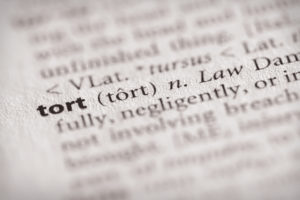There is new and understandable outrage from the families of the twelve deceased mine workers who perished in Sago Mine in West Virginia last year. In the final Sago Mine disaster that left these 12 men dead, at least four of the air masks meant to protect the miners from dangerous smoke and fumes did not work, the sole survivor wrote in a letter to victims’ families this week.
“The first thing we did was activate our rescuers, as we had been trained,” wrote the miner, Randal McCloy Jr. “At least four of the rescuers did not function. There were not enough rescuers to go around.”
The two-page typed letter offers the first detailed account of what happened to the 13 men trapped 260 feet underground, struggling for air as rescue crews tried to reach them. “As my trapped co-workers lost consciousness one by one, the room grew still and I continued to sit and wait, unable to do much else,” Mr. McCloy wrote.
Mr. McCloy was comatose when he was rescued and spent months in a hospital with extensive brain damage, originally described as remembering nothing about the disaster. Stephen P. Goodwin, the lawyer for the McCloy family, verified that the letter, obtained by The Associated Press, came from Mr. McCloy and that it had been dictated, but would not say who wrote it down for him. “All I will say is that the letter accurately reflects all of his thoughts and sentiments,” Mr. Goodwin said.
Phil Smith, a spokesman for the United Mine Workers Union of America, said: “The letter raises some key concerns yet again, as we have done in the past, about these oxygen generation packs.” Mr. Smith said it was “absolutely imperative” that federal mine regulators “begin an immediate and nationwide inspection of these units.”
In a statement, the mine owner, International Coal Group Inc., refused to comment on the validity of Mr. McCloy’s recollection. But the company said the miners’ air packs, also known as self-contained self-rescue devices, or S.C.S.R.’s, had been tested by federal investigators after the Jan. 2 explosion that trapped the miners.
“I.C.G. was informed that the S.C.S.R.’s found at the barricade were deployed and showed evidence of use,” the statement said. “The federal investigators did not note any defective S.C.S.R.’s and all appeared to be in working order.”
The statement did not indicate whether workers at the mine, which resumed work on March 15, were still depending on the same equipment.
“We found a sledgehammer, and for a long time, we took turns pounding away,” Mr. McCloy wrote, describing their frantic efforts to get the attention of rescuers above. Eventually realizing they were unlikely to escape alive, the men recited a “sinner’s prayer,” and began quietly penning farewell notes to their families, the letter said.
While the cause of the explosion remains uncertain, the company has speculated that lightning bolt ignited a natural buildup of methane in the mine. Federal officials are conducting an investigation and are expected to release their findings next month.
There have been 26 mining deaths nationwide in only the first four months of the year. Last year at this time, there were 13 nationwide.
It was unclear how Mr. McCloy, who was initially unable to speak and now does so with difficulty, could have put together such a detailed chronology of events. Mr. McCloy, 27, who has been nicknamed the “miracle miner,” survived exposure to toxic fumes for more than 40 hours.
The statement from the coal company said that all of the oxygen packs had been inspected daily by miners and every 90 days by a mining official.
Dirk Fillpot, a spokesman with the federal Mine Safety and Health Administration, said his agency examined all the air packs recovered from the mine. Initial tests concluded that the packs were functioning properly, Mr. Fillpot said. He said his agency was “looking at whether the miners received adequate training in the use of their S.C.S.R.’s.”
In 2005, the Sago Mine had only one violation concerning its oxygen equipment, according to federal records. The violation was for failing keep proper records of inspections of the mine’s oxygen packs.

The Legal Examiner and our Affiliate Network strive to be the place you look to for news, context, and more, wherever your life intersects with the law.










Comments for this article are closed.